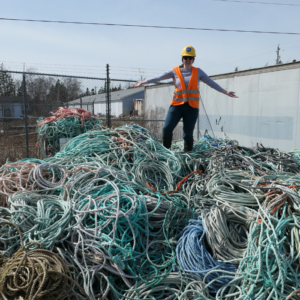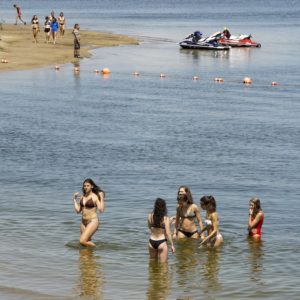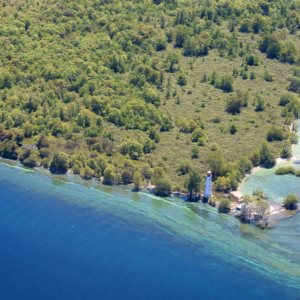Learn about Lake Ontario’s fisheries and how a new National Marine Conserved Area will protect them
The Great Lakes support the most valuable freshwater fisheries in the world. According to the Great Lakes Fishery Commission (GLFC), the value of the combined Great Lakes fisheries is almost $9 billion, of which approximately $250 million is from commercial fishing. Protecting natural ecosystems by establishing a marine protected area in Lake Ontario can help ensure the health of the fisheries for the long term.
Which fish live in Lake Ontario?
Parts of Lake Ontario are home to an impressive array of fish species, including Chinook, Coho and Atlantic Salmon, Rainbow, Brown and Lake Trout, Northern Pike, Smallmouth and Largemouth Bass, Walleye, Muskie, Channel Catfish, and Common Carp. The largest salmon ever caught by an angler in Lake Ontario was 21.4 kg. and the largest Lake Trout weighed 23.5 kg. Channel Catfish can weigh as much as 20 kg., and Common Carp as much as 25 kg. Although protected, Lake Sturgeon in Lake Ontario can weigh as much as 150 kg. The next largest fish species in Lake Ontario are Muskie, weighing as much as 30 kg.
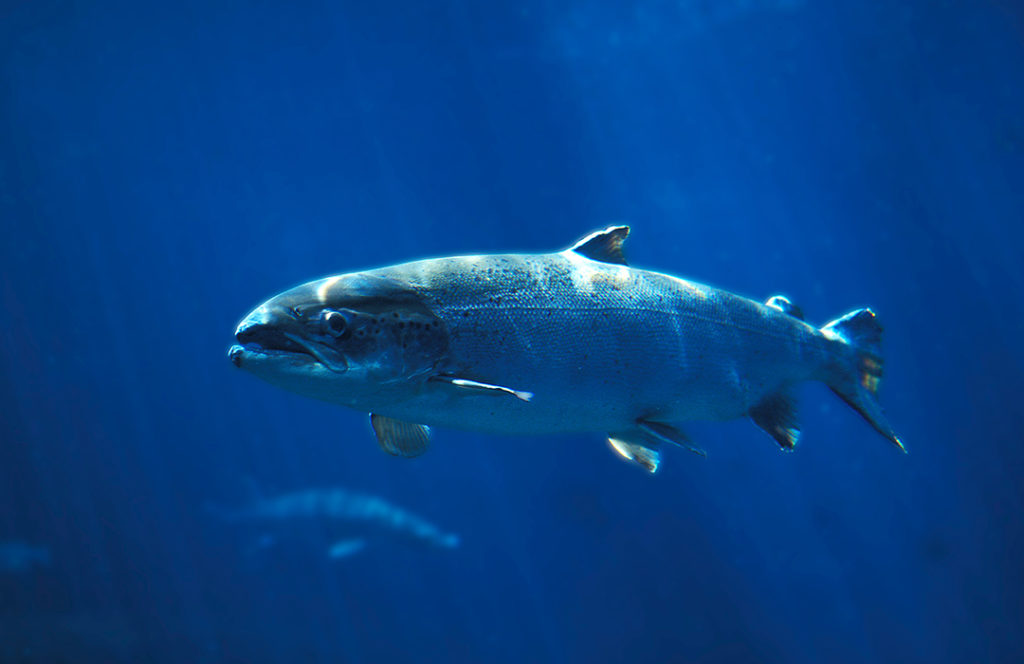
The point being, any one of these fish represents significant value when compared with wild-caught fish for sale in supermarkets, and much more in terms of what anglers are willing to pay to catch-and-release prize fish.
How much is the Great Lakes fishing industry worth?
The GLFC estimates that recreational anglers and First Nations fishers spend $8.5 billion annually to go fishing on the Great Lakes. What we don’t know is the value of the fish being captured, released, or harvested by them. It’s relatively simple to assess the value of commercial catches, since they are reported and their market values can be easily determined. This is not the case with Indigenous and recreational fisheries, since neither are required to report their catches. We can’t even be certain how many of the 1.4 million licensed Ontario recreational anglers fish in the Great Lakes, because licenses provide province-wide access. Not to mention, Ontarians under 18 and over 65 can fish recreationally without a license.
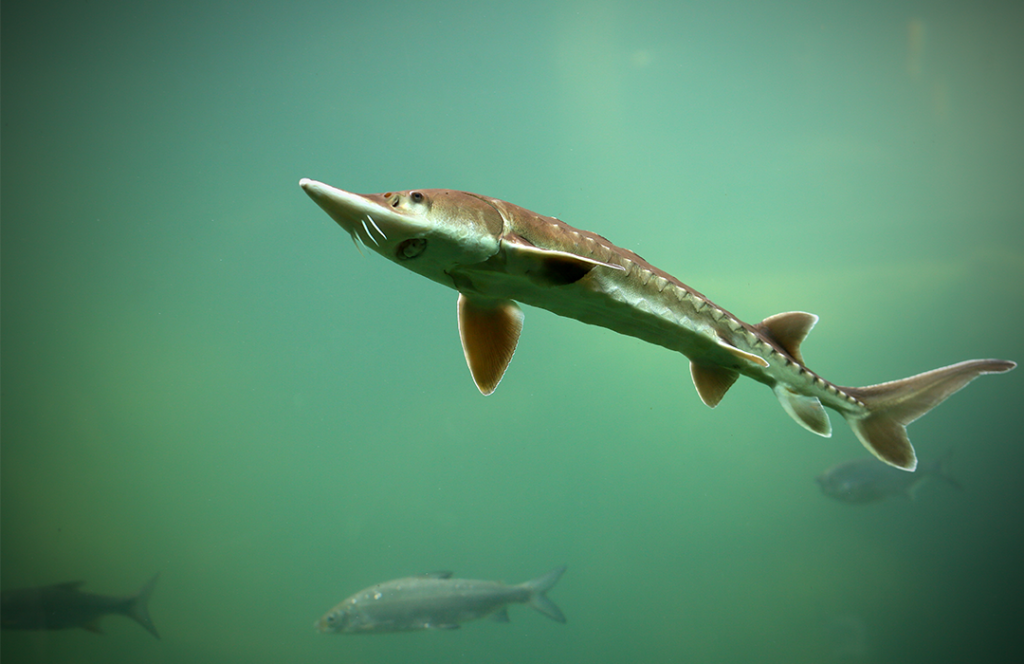
Knowing the true value of all Great Lakes Fisheries would showcase the social, economic, and political reasons to safeguard fish in the Great Lakes so that everyone can cast into these freshwater gems.
The point is that any one of these fish represents significant value when compared with wild-caught fish for sale in supermarkets, and much much more in terms of what anglers are willing to pay to catch-and-release trophy fish.
How many recreational anglers use the Great Lakes?
According to Statistics Canada’s 2015 recreational fishing survey data, about two-thirds of an estimated 170 million fish caught annually in Canada are released by approximately 3.5 million licensed recreational anglers between the ages of 18 and 65. If you were to add the fish caught by kids under 18 and retired folks, the numbers of anglers and fish caught most certainly would go up.
It’s clear that the relationship between the different people, their communities, and the health of Great Lakes fisheries is both historic and significant. This applies to all the Great Lakes, but especially to Lake Ontario because even though it is the smallest of all the Great Lakes, it’s the only one where the fishing overall is improving. Lake Ontario is also the home waters of over 9 million of the 34 million people who reside in the Great Lakes basin.
How can a National Marine Conservation Area improve the health of Lake Ontario’s fish?
According to Dr. Barrie Gilbert, an advisor to Nature Canada, fish living within a National Marine Conservation Area (NMCA) are more likely to be studied by scientists. The NMCA also has other reasons for being established, such as to preserve historic shipwrecks, to protect vital fish habitat such as spawning beds or shoreline wetlands, to attract visitors to the area, and to highlight the important socio-economic and cultural role fish serve in nearby communities.
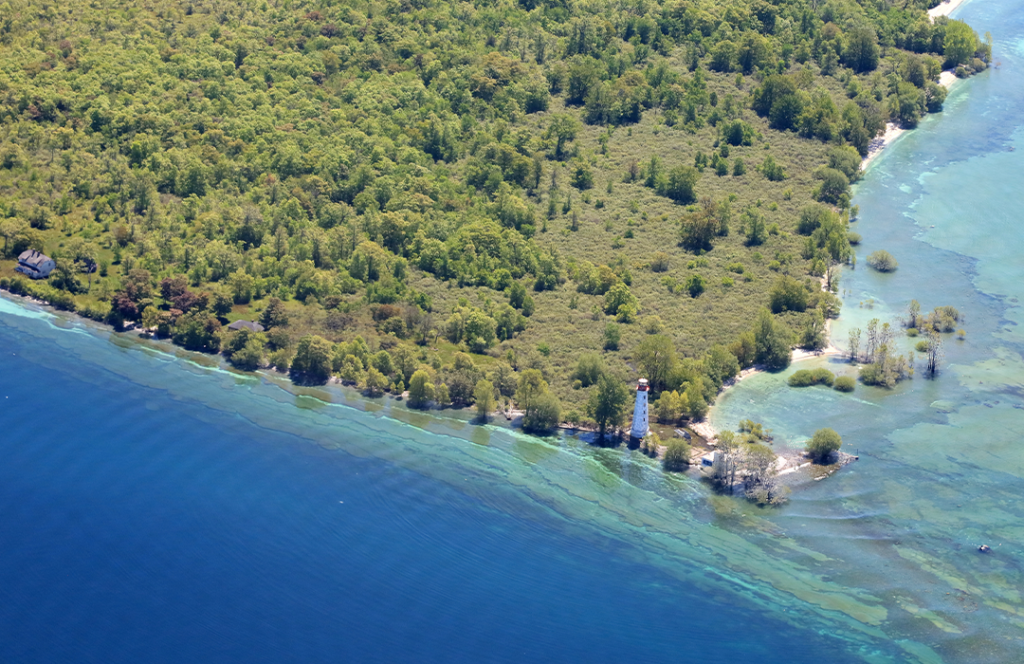
However, when it comes to fishing, Dr. Gilbert believes the NMCA being proposed has nothing to do with reducing fishing pressure. In fact, he says the true potential of Lake Ontario to provide people with high-quality seafood is not fully tapped, and that an NMCA would increase public awareness of this truly bountiful fishing resource. To learn more about what Dr. Barrie Gilbert has to say about the introduction of an NMCA in the Canadian waters located in Lake Ontario’s East Basin, listen to The Blue Fish Radio Show.
There’s so much more to explore and discuss about this proposal. A scientific review still needs to be performed, local knowledge collected, and meaningful consultations with First Nations and other stakeholders conducted. Lessons learned and best practices also need to be gathered from those involved and affected by the two other NMCAs on Canada’s waters on the Great Lakes.
Canada meeting its 30 percent protection goals by 2030 isn’t that far down the road, so Parks Canada will be motivated to make progress. Reconciliation is also a priority, and it’s through these sorts of collaborative initiatives that people of all backgrounds are brought together in a spirit of cooperation, mutual recognition, and shared responsibility.

Blue Fish Canada started digging in on the topic of NMCAs some time back. We’ve also been monitoring the movement toward Indigenous Protected and Conserved Areas (IPCAs). Fishers and anglers all share similar values when it comes to safeguarding fish health and sustainable fishing. This includes adopting conservation measures when called for by evidence-based science.
At the end of the day, ensuring the long-term health of the ecosystems that support our fisheries is in everyone’s best interest. Conservation science, traditional knowledge, and input from communities that rely on fishing and tourism can help us implement measures that respect the important social, economic, and cultural significance of fish and fishing in Lake Ontario. We need improvements to fish habitat, a strategy that would end the need for fish consumption advisories, improved harvesting insights and cooperation, and continual advancements in sustainable fishing tactics that both safeguard fish stocks and improve fish welfare. So, let the discussions begin.
Find out more about why Lake Ontario needs a National Marine Protected Area here, then voice support. Then check out 5 Ways to Enjoy Nature in Lake Ontario’s Eastern Basin and Learn Why Lake Ontario’s Eastern Basin is a Biogem that Needs Protection.
Lawrence Gunther is a conservationist, outdoor writer, podcaster, blogger, filmmaker and TV personality. A life-long outdoor enthusiast, Lawrence has travelled extensively throughout Canada to experience and document the country’s amazing natural resources and diverse peoples. Having earned his master’s in environmental studies from York University, Lawrence went on to establish the charity Blue Fish Canada, dedicated to conserving Canada’s water quality and fish health. Despite being registered blind at age eight, Lawrence has leveraged his visualization and storytelling skills to open people’s minds to Canada’s underwater worlds. His work has been recognized with numerous awards including the Queen Elizabeth Diamond Jubilee Medal, and the Governor General’s Meritorious Service Medal.

